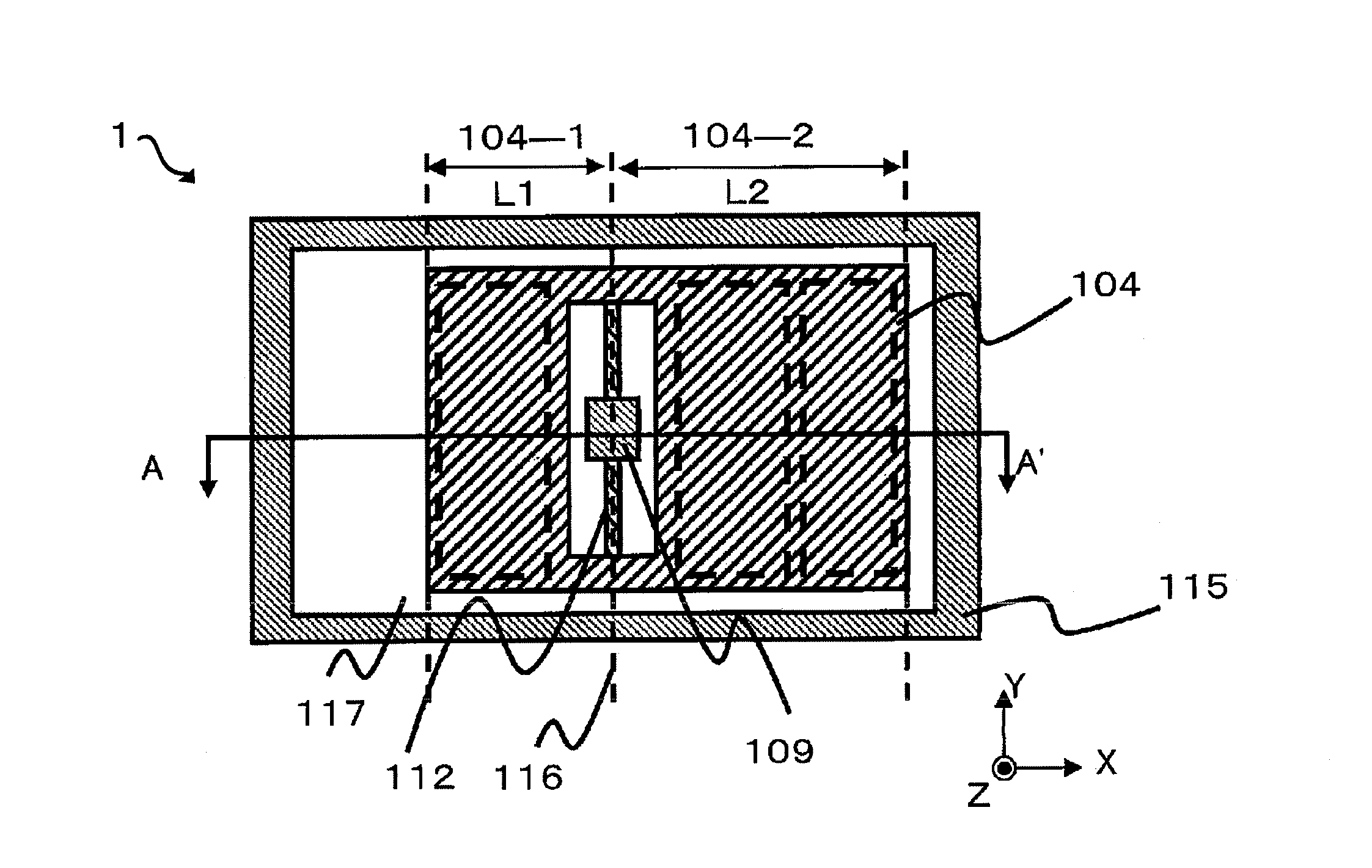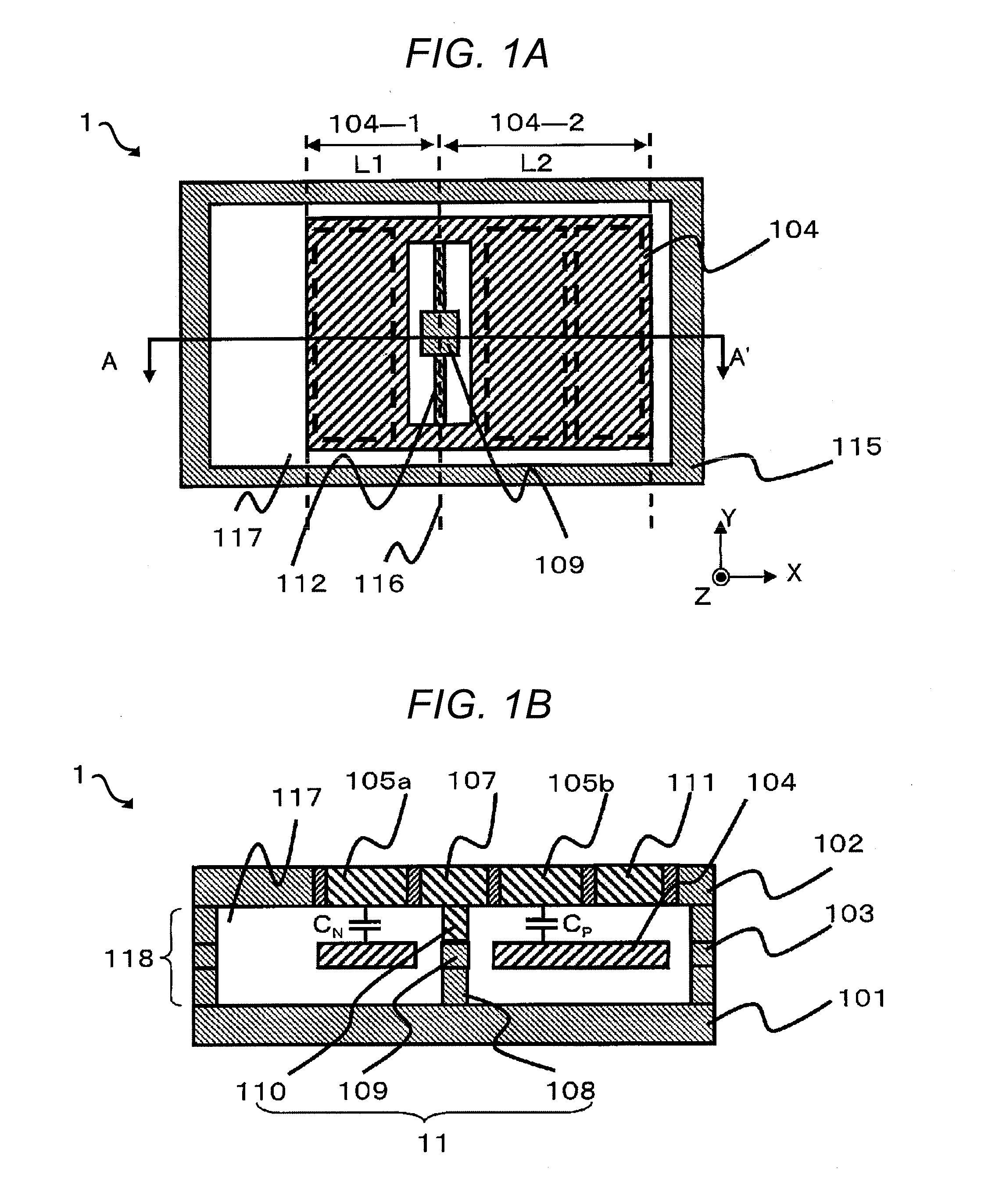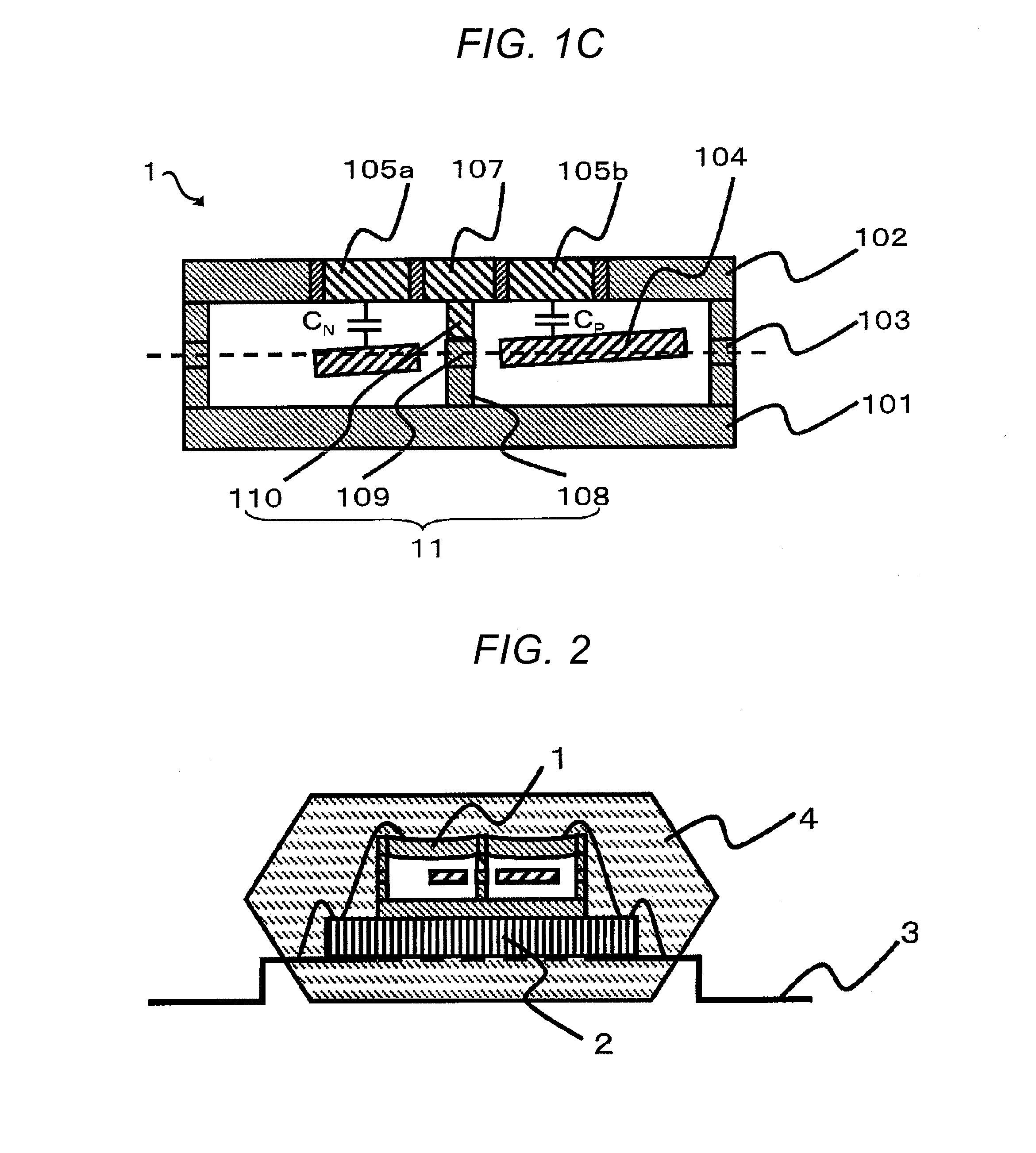Inertial Sensor
a sensor and sensor technology, applied in the field ofinertial sensors, can solve the problems of deterioration in sensor sensitivity, change in detection electrode due to sensor sensitivity, asymmetrical distortion of detection electrodes, etc., and achieve the effect of reducing the influence of asymmetrical distortion of mems elements and reducing the influence of mems element distortion
- Summary
- Abstract
- Description
- Claims
- Application Information
AI Technical Summary
Benefits of technology
Problems solved by technology
Method used
Image
Examples
first embodiment
[0037]FIG. 1A is a sectional view of an MEMS element 1 in a first embodiment on the XY plane including a movable part 104. A portion of the movable part 104 opposed to detection electrodes 105a and 105b and a portion of the movable part 104 opposed to a diagnosis electrode 111 are indicated by dotted lines. FIG. 1B is a sectional view in an XZ plane of the MEMS element 1 shown in FIG. 1A taken along a line A-A′.
[0038]In the MEMS element 1 shown in FIGS. 1A and 1B, in a cavity 117 surrounded by a first silicon wafer substrate 101, a second silicon wafer substrate 102 provided above the first silicon wafer substrate 101, and a sidewall 118, the movable part 104 formed on a silicon wafer substrate 103, an elastic beam 112, a supporting section 109, and a frame body 115 are provided. In this way, an inertial sensor according to this embodiment is desirably formed by a three-layer structure including three silicon wafer substrates.
[0039]The supporting section 109 is provided in the cente...
second embodiment
[0056]A second embodiment is explained. Detailed explanation of components same as the components in the first embodiment is omitted. Differences from the first embodiment are mainly explained.
[0057]FIG. 3A is a sectional view in an XY plane of the MEMS element 1 according to this embodiment. A portion of a first movable part 204 opposed to detection electrodes 205a and 205b and a portion of a second movable part 206 opposed to diagnosis electrodes 211a and 211b are indicated by dotted lines. FIG. 3B is a sectional view in an XZ plane of FIG. 3A taken along a line A-A′.
[0058]In the MEMS element 1 according to this embodiment, in a cavity surrounded by a first silicon wafer substrate 201, a second silicon wafer substrate 202 provided above the first silicon wafer substrate 201, and a sidewall 218, the first movable part 204 and the second movable part 206 formed in a silicon wafer 203, elastic beams 212 and 213, a supporting section 209, and a frame body 215 are provided.
[0059]The su...
third embodiment
[0074]The configuration of an inertial sensor according to a third embodiment is explained with reference to FIGS. 5A and 5B.
[0075]FIG. 5A is a sectional view in an XY plane including a movable part 404 of the MEMS element 1 in this embodiment. Portions of the movable part 404 opposed to detection electrodes 405a and 405b and a diagnosis electrode 411 are indicated by dotted lines. FIG. 5B is a sectional view in an XZ plane of the MEMS element 1 shown in FIG. 5A taken along a line A-A′.
[0076]In the MEMS element 1 shown in FIGS. 5A and 5B, three silicon wafer substrates 401, 402, and 403 form a three-layer structure same as the three-layer structure in the first embodiment.
[0077]On the other hand, the third embodiment is different from the first embodiment in that the MEMS element 1 includes two supports 11 and 22. As in the first embodiment, the support 11 is a support including supporting sections 408a, 409a, and 410a that support the movable part 404. On the other hand, the suppor...
PUM
 Login to View More
Login to View More Abstract
Description
Claims
Application Information
 Login to View More
Login to View More - R&D
- Intellectual Property
- Life Sciences
- Materials
- Tech Scout
- Unparalleled Data Quality
- Higher Quality Content
- 60% Fewer Hallucinations
Browse by: Latest US Patents, China's latest patents, Technical Efficacy Thesaurus, Application Domain, Technology Topic, Popular Technical Reports.
© 2025 PatSnap. All rights reserved.Legal|Privacy policy|Modern Slavery Act Transparency Statement|Sitemap|About US| Contact US: help@patsnap.com



